Confession: I used to be a serial plant killer. I'm sure there is a "wanted" poster with my mug on it in some garden center. While my thumb has gotten a bit greener over the past few years, I still appreciate a plant that requires little care. At the top of my easy-to-care-for list are succulents and mosses. Let's focus on succulents. There are thousands and thousands of varieties of succulent. Their foliage can be green red, silver, yellow, purple and even variegated. Many also have beautiful blooms. Most of them store water in their leaves, giving them a plump look and often an architectural quality. Their ability to store water make these plants very drought resistant. Some do best in warm climates and others (ice plants) tolerate much colder weather. Some of the most popular succulents for gardening come from the sedum genus. You've likely seen them around, in your grandmother's garden or kickin' it as groundcover. The plant above is Sedum Globosum, commonly called "Old Man's Bones" because it's foliage looks like ball joints (though it's missing some foliage after being attacked by birds). One of my favorite succulents is the Mesa Verde Ice Plant which was discovered as a spontaneous mutation at the Denver Botanic Gardens! Oh, and then there are the lithops, which are just crazy cool and spectacularly weird.
Succulents are so cool that we seem to be in the midst of a succulent craze. There are great examples, all over the web, of fun things to do with succulents. If you are in California, and starting to plan a wedding now that Prop 8 has been overturned, check out Flora Grubb Gardens in San Francisco. They do the most amazing succulent bouquets and boutonnières, which are much more eco-friendly than cut flowers!
Succulents make great container plants. And there is no reason not to get creative with the type of container you choose. I am a big fan of recycling found objects for this purpose. Currently, I'm using a paint can, an enamel bowl, a flour sifter, a colander, a teacup and a latte mug to house various plants. The big thing to remember when choosing a container is that you need drainage. Succulents, in particular, don't like soggy roots. It's necessary to pot them in a sandy, well draining soil. If your container has built in drainage holes (e.g. colander, flour sifter), you're set! If it's something like a paint can or enamel bowl, you can just use a hammer and nail to create some holes.
If you want to create drainage holes in a ceramic cup or bowl, a hammer and nail isn't going to work. Instead, grab a drill and a bit with a carbide or diamond tip that is made for ceramic and glass. The first step is to find a mug, teacup or bowl lying around your house. If you can't bear to bore a hole in your Smith College Alumnae Association mug, look for something at a thrift store or yard sale. I chose a 3/8" bit, but if your container is large, you may want to choose a larger bit or just drill multiple holes. Flip your cup over and place a dish towel underneath to provide a little cushion and to ensure that your teacup stays in place while you are drilling. It's sometimes handy to take a nail and scratch an x at the spot where you are going to drill. This gives your drill bit a place to grip instead of skipping around.
It's also important to keep the area you are drilling flooded with water. This keeps the bit from overheating and provides a lubricant so that your bit doesn't get worn out. Time to grab a buddy and ask them to dribble water while you drill. Or, if you are lucky, your cup or mug will have a bit of a well on the bottom that will hold some water. If that's not the case, get some putty or play-doh and channel you're inner first grader. Roll out a worm shape and then create a moat around your drill site, pressing it down so that the seal is water-tight. Now move your dog out of the way and drill!
Once you have your drainage hole drilled, procure soil made for succulents or cacti (or mix your own) and pot your plant! Succulents are very hardy and tough to kill; the one big no-no is overwatering. Only water when the soil is quite dry. As I mentioned above, there are many varieties to choose from, just make sure to pick one that will work for your climate. Check out your local nurseries for ideas. But, there is one more, totally awesome thing about succulents. They are really, really easy to propagate.
Some varieties create offshoots or pups (you can see some in my "hen and chicks" plant below), that are simple to uproot and replant. For the rest, simply snip or pinch off a stem or two, and place your cutting in a protected place for a couple of days. The end you've cut will dry out and scab over. At this point you can dip the end in a bit of rooting hormone, though I've never found this necessary. Now, plant your cutting. It should take root and start to grow within a couple of weeks. I've purchased some of my succulents from a local nursery, but others I've purloined from friends and grandma. Trading cuttings with friends in your area also ensures that you have varieties which will thrive in your climate.
Speaking of swapping succulents, does anyone have a String of Pearls plant? Let's trade!

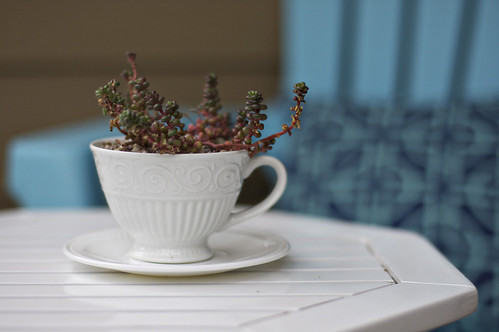
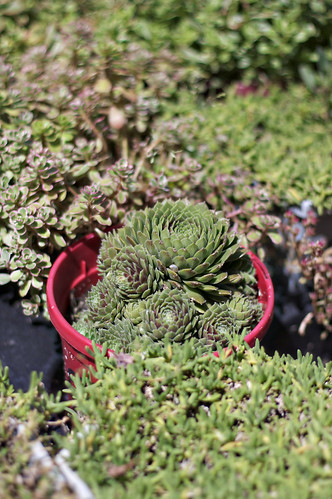
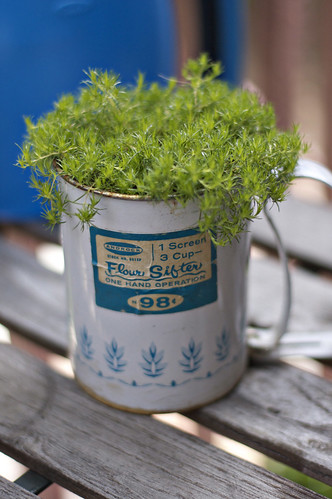
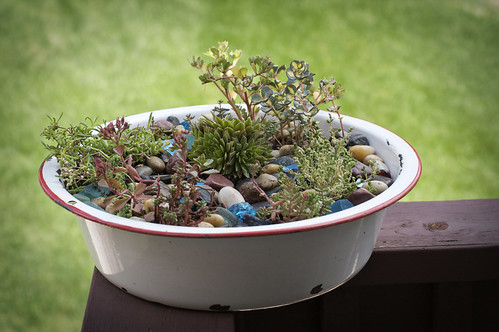
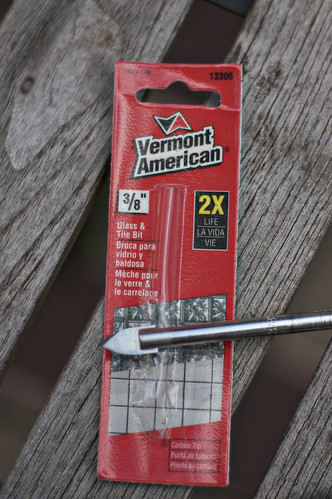
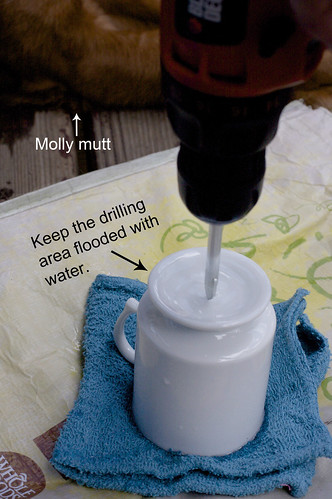
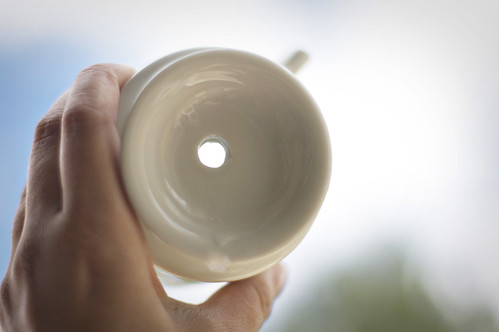

No comments:
Post a Comment